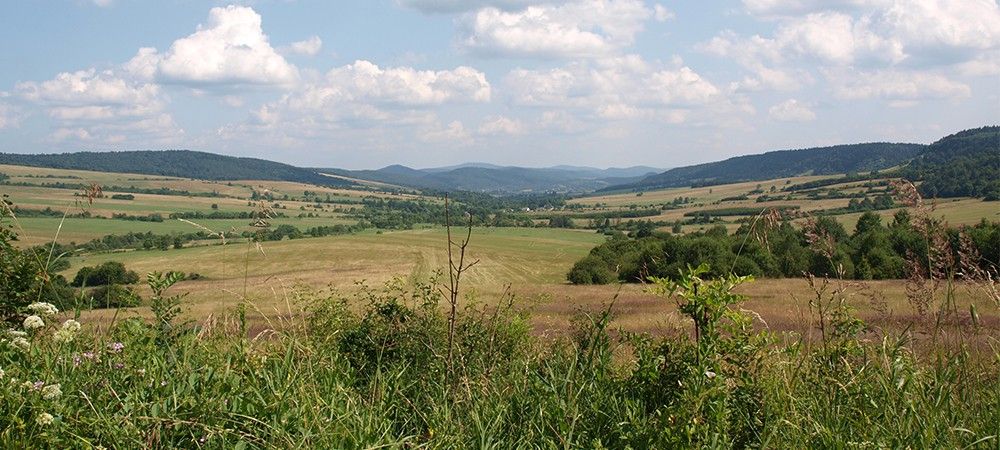
Beskid Niski
Beskid Niski this mountain range is considered by many to be the wildest in Poland. To the east, it borders Bieszczady Mountains, and stretches up to the Kotlina Sądecka to the west. To the north, it borders Pogórze Środkowobeskidzkie, and Pogórze Ondawskie to the south. In Poland, its highest peak is Lackowa (997 meters above sea level), and in Slovakia – Busov (1002 metres above sea level). The Dukla Pass, at 500 metres above sea level the lowest pass in the Carpathians, is part of Beskid Niski. The major rivers include Osławia, Wisłok, Jasionka, Wisłoka, Ropa and Biała Dunajcowa. There are three manmade lakes in Beskid Niski: on the Wisłok in Sieniawa, on the Ropa in Klimkówka and on the Wisłoka in Krępna.
A significant proportion of Beskid Niski is protected under the Magura National Park and the Jaśliska Landscape Park.
Beskid Niski is formed by sedimentary rocks described as Carpathian Flysch Belt. You can see here outcrops of the Magura sandstone, which have taken fantastical forms. The most famous ones are Kornuty at Magura Wątkowska and Diabli Kamień at Folusz.
In the entire Beskid Niski, there are 238 deep and shallow caves. Among its hills and mountains, you can also see two barrier lakes, at Maślana Mountain and Cergowa Mountain.
Around 70% of Beskid Niski is covered by forests. In the foothills, there are remains of the original oak and hornbeam forests, with alder copses and wicker thickets in the river valleys. The higher levels are covered by fir, beech and pine forests. Thanks to the low population density and the abundance of forests, there are many roe deer, red deer, wild boars, and hares. Out of the 140 species of birds living there, the lesser spotted eagle, golden eagle, common buzzard, hawfinch, Eurasian eagle-owl, Ural owl and black stork are especially noteworthy.
